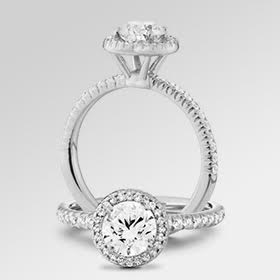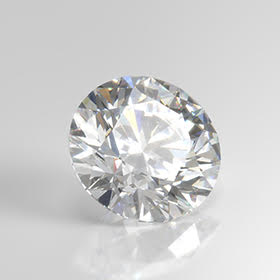The word is getting out — there’s a new diamond in town that is 30-40% cheaper than mined diamonds but just as stunningly beautiful (and the exact same chemical, physical, and optical properties!). Of course, we’re talking about lab-created diamonds, which started trickling into the market in 2013, when the scientific processes became sophisticated enough to produce nearly identical gemstones. According to Morgan Stanley, “Lab-grown diamonds could take a 15% market share in gem-quality melee diamonds and a 7.5% share in sales of larger diamonds by 2020.” Wondering what’s causing this boom in popularity?
General Perception (and Former Marketing Misinformation)
Lab-created diamonds, admittedly, have not always been viewed in a positive light by consumers. This is due completely to misinformation pumped by marketing campaigns, as well as play on the emotion associated with owning something real or authentic. In other words, mining companies are trying to dupe consumers into feeling like a lab-grown diamond isn’t a “real” diamond, which is entirely false. In fact, in a Federal Trade Commission ruling, the FTC stated, “A diamond is a diamond no matter whether it is grown in the lab or comes out of the ground.”
Furthermore, the words “natural” and “synthetic” are no longer to be used due to their scientific inaccuracy: Specifically, the FTC removed the word natural from the definition of a diamond. Until now, the FCC definition stated, “A diamond is a natural mineral consisting essentially of pure carbon crystallized in the isometric system.” Now, the definition reads “A diamond is a mineral consisting essentially of pure carbon crystallized in the isometric system.”
As diamonds created in a lab become more popular, consumers are learning the truth about the similarities and the differences in both types of diamonds.
A Decreasing Global Supply of Diamonds
As the global supply of mined diamonds decreases, it’s imperative to begin making environmentally-conscious choices that help preserve our home planet’s natural resources. This is one of the huge drivers for purchasing lab-created diamonds, as more and more information about sustainability is emerging in order to help consumers make informed, conscious purchases. Speaking of sustainability, it’s also fascinating to learn that it requires more energy to extract diamonds from the Earth than to create them in the lab.
Millennials are More Conscious
“In a survey among 1,000+ American consumers, aged 21-40 years, across all income ranges, nearly 70% of consumers said they would consider a lab-grown diamond for the center stone in an engagement ring if they were shopping or shopping with someone for an engagement ring. That represents an increase of 13 percentage points in only one year when 57% said the same.”
This fact is largely due to the conscious attitudes of millennials, who don’t want to harm Earth or harm people in their buying choices (high five to millennials!). In fairness, the major conflicts with blood diamonds didn’t emerge in national headlines until the mid-1990s, as a global spotlight was put on the funding of rebel militias in Africa via the mining industry. And with the use of social media, millennials are more informed than any other consumer group. Research shows again and again that “the millennial generation cares deeply about the environment, the global community, and social justice”, and that makes lab-created diamonds the perfect jewelry choice for them.
We are excited and honored to be at the forefront of the rise in popularity of lab-grown diamonds. We offer beautiful, unique colored diamonds as well as classic white stones, in a variety of settings (rings, earrings, pendants) or as loose stones. Ready to jump on this smart, savvy, better-for-Earth trend?










